piątek, 12 lipca 2013
Turbans in 17th or 18th century Turkish Manuscript
Source: http://www.librit.unibo.it/page/oggetti/oggetto.html
Catalogue of the turbans. Ms., sec. XVII, cart., cc. 81, milimeter 90x240. With 218 colored illustrations to pen and. The manuscript reproduces, in shape of ritratti stilizzati, the various personages who could themselves be met in the Ottoman empire of the sec. XVII. The reference and to the social class, to loads political-administrative with the personage, to the profession, its ethnic-geographic belongings. Every figure contains didascalie in Ottoman Turk and - on the back - its transcription and translation in Italian. Album of the sort, with galleries of personages, not rare in the Ottoman art, is present in several Italian and European libraries. The importance and the rarita one of this copy are in the documentation, rich and lively above all for the turbans and hairdos of the personages, nonche in the wealth of the didascalie bilanguages.
środa, 19 czerwca 2013
sobota, 15 czerwca 2013
Fortress Turban
This Turban is known as a Dastaar Boonga or turban fortress worn by a group of skilled warrior Sikhs called Akali Nihangs.
It was used to protect the head in battle and to hold their weapons, including daggers, swords and metal throwing discs.
- See more at: http://sikhsangat.org/2013/sikh-fortress-turban-to-go-on-display-at-museum/#sthash.VPfxedmd.dpuf
It was used to protect the head in battle and to hold their weapons, including daggers, swords and metal throwing discs.
- See more at: http://sikhsangat.org/2013/sikh-fortress-turban-to-go-on-display-at-museum/#sthash.VPfxedmd.dpuf
wtorek, 11 czerwca 2013
Space making sound
++++++++
SALAT #1
++++++++
"Salat" is the title of an ongoing art project by Johannes Gees.
"Salat" started in 2007, when Johannes Gees installed several loudspeakers on a number of Swiss churches, which played the muslim "call for prayer" from the towers, until they were seized by the police.
http://www.youtube.com/watch?v=YivGTL...
++++++++
SALAT #2
++++++++
In 2008/9, Johannes Gees made "Salat #2", combining the call for prayer from the main mosque in Mecca with the christian prayer "Ave Maria" in a traditional chanted version originally recorded in the Swiss mountains.
http://vimeo.com/1722526
++++++++
SALAT #3
++++++++
Salat #3 is the third stage of the project. It is supposed to happen in a muslim country. One of Johannes Gees loudspeakers is to be installed on a minarett, playing the "Ave Maria" at official prayer times.
Johannes Gees is currently seeking support to realize this ambitious project. The artist can be contacted at johannes.gees@gmail.com.
poniedziałek, 10 czerwca 2013
A History of the Turban in Fashion. Slideshow
http://glo.msn.com/style/a-history-of-the-fashion-turban-8631.gallery#!stackState=0__%2Fstyle%2Fa-history-of-the-fashion-turban-8631.gallery
Inspired by the Art Deco motion in 1920s fashion, the turban was also introduced by Reboux and her assistant Mme. Agnes. It featured wraps of fabric close to a cloche framework, revealing a hat that was the two practical and reminiscent of the ancient Egyptian culture that was popularized in the 1920s.
niedziela, 9 czerwca 2013
Turban. Different Religious Types
Sikh men commonly wear a peaked turban that serves partly to cover their long hair, which is never cut out of respect for God's creation. Devout Sikhs also do not cut their beards, so many Sikh men comb out their facial hair and then twist and tuck it up into their turbans along with the hair from their heads. Sikhism originated in northern India and Pakistan in the 15th century and is one of the youngest of the world's monotheistic religions. There are an estimated 18 million Sikhs in the world, with some 2 million spread throughout North America, Western Europe and the former British colonies. |
Muslim religious elders, like this man from Yemen, often wear a turban wrapped around a cap known in Arabic as a kalansuwa. These caps can be spherical or conical, colorful or solid white, and their styles vary widely from region to region. Likewise, the color of the turban wrapped around the kalansuwa varies. White is thought by some Muslims to be the holiest turban color, based on legends that the prophet Mohammed wore a white turban. Green, held to be the color of paradise, is also favored by some. Not all Muslims wear turbans. In fact, few wear them in the West, and in major cosmopolitan centers around the Muslim world, turbans are seen by some as passé. |
Afghan men wear a variety of turbans, and even within the Taliban, the strict Islamic government that controls much of the country, there are differences in the way men cover their heads. This Taliban member, for example, is wearing a very long turban — perhaps two twined together — with one end hanging loose over his shoulder. The Taliban ambassador to Afghanistan, on the other hand, favors a solid black turban tied above his forehead. And some men in Afghanistan do not wear turbans at all, but rather a distinctive Afghan hat. |
Iranian leaders wear black or white turbans wrapped in the flat, circular style shown in this image of Iranian supreme leader Ayatollah Ali Khamenei. The word turban is thought to have originated among Persians living in the area now known as Iran, who called the headgear a dulband. |
Indian men sometimes wear turbans to signify their class, caste, profession or religious affiliation — and, as this man shows, turbans in India can be very elaborate. However, turbans made out of fancy woven cloths and festooned with jewels are not unique to India. As far away as Turkey, men have used the headgear to demonstrate their wealth and power. |
The kaffiyeh is not technically a turban. It is really a rectangular piece of cloth, folded diagonally and then draped over the head — not wound like a turban. Yasser Arafat, the Palestinian leader, has made the kaffiyeh famous in recent times. However, the kaffiyeh is not solely Palestinian. Men in Jordan, Saudi Arabia and the Arab Persian Gulf states wear kaffiyehs in colors and styles that are particular to their region. Jordanians, for example, wear a red and white kaffiyeh, while Palestinians wear a black and white one. And a man from Saudi Arabia would likely drape his kaffiyeh differently than a man from Jordan. The black cord that holds the kaffiyeh on one's head is called an ekal. |
Desert peoples have long used the turban to keep sand out of their faces, as this man from Africa is likely doing. Members of nomadic tribes have also used turbans to disguise themselves. And sometimes, the color of a person's turban can be used to identify his tribal affiliation from a distance across the dunes. This man's turban is a very light blue. In some parts of North Africa, blue is thought to be a good color to wear in the desert because of its association with cool water. |
ILLUSTRATIONS BY PAUL SCHMID / THE SEATTLE TIMES
Subskrybuj:
Komentarze (Atom)
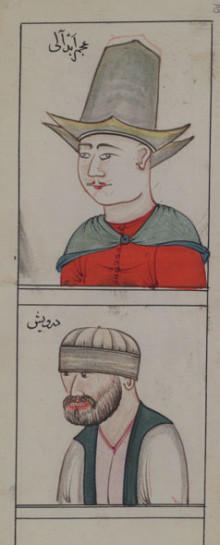
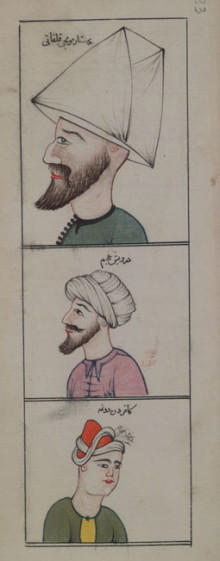
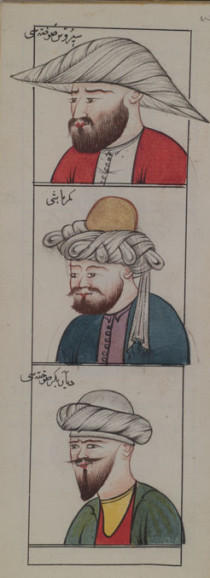
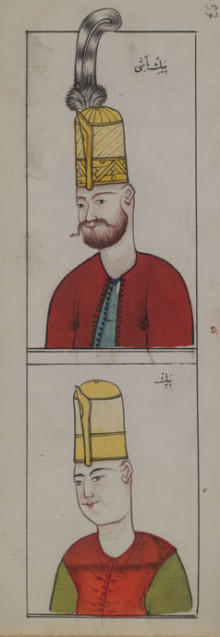
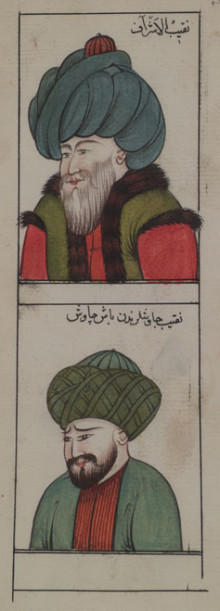

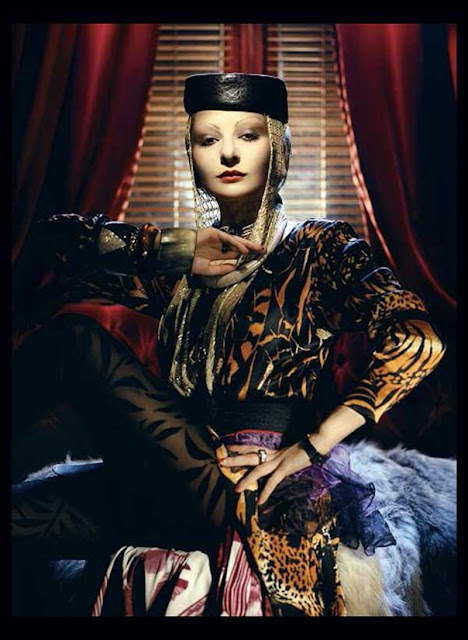
+C+BABA_1500_0_resize_90.jpg)










